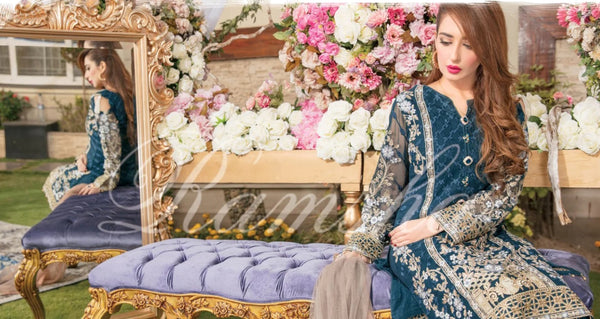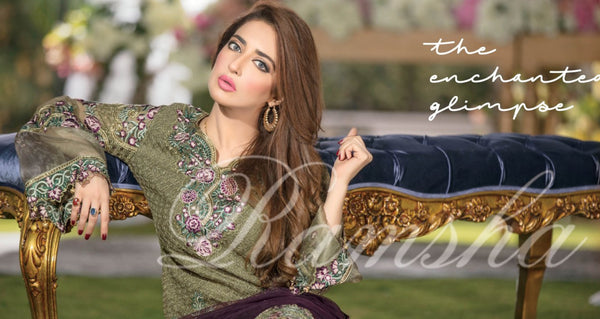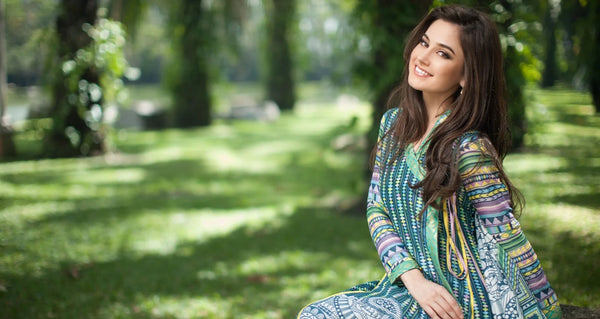What is a Saree?
A saree (also spelled Sari) is a an outer garment, mainly worn by women from the Indian subcontinent, that is made of about six (6) yards long fabric. Saree, worn with a blouse or choli, is wrapped around the waist over a petticoat with the left end made to hang over the head or shoulder. A Saree comes in various types of fabric, color, design and styles.
The ever graceful Saree is one of the most iconic dresses to come out of Indian Subcontinent and South Asia.
From India to Pakistan, Bangladesh, Nepal, Sri Lanka, and more, the women of South Asia have found love with the saree, and have been draping this piece of unstitched fabric around their bodies for centuries.

Multi-Color Saree Design for Women
It could also be used to mean the entire ensemble of the saree drape alongside the short blouse and petticoat it is commonly worn with nowadays. We’ll dive deep into the saree origins, styles, trends in this post including how this fashionable and simple piece of clothing continues to win the hearts of women in South Asia and beyond.
Saree Background, History & Origin
Legend has it that the saree got a head start with the Indus Valley Civilization of Northwest India that dates back to around 2800 to 1800 BC. The saree’s case is believed to have been advanced by the proliferation of the cotton cultivation and weaving of the 5th millennium BC.
That saree revolution began with cotton weavers making drapes for women that were made from cotton fabric dyed in diverse kinds of dyes from indigo to lac, turmeric, red madder, and other kinds of dyes. That development marked the beginning of a new era for South Asian fashion that saw the saree quickly becoming more accepted and well-liked.
Men and women in India have worn the saree since around the second century BC. While the dress was originally worn around the body as a single piece of clothing, the 12th-century Muslim conquest of north and central India saw a change in how the dress was worn.

A Red Saree with Embroidery Work
Because the government of the day insisted on women covering their bodies, the women started wearing the saree over a short blouse alongside a petticoat into which the saree can be tucked around the waist. From that time up till now, the saree continues to win the hearts of women.
The Making Of The Saree
The success of the saree has largely been built on the impressive handicraft culture on which it was based. India, for example, has one of the best handicraft cultures in the world from silk weaving to dyeing, printing, and more. The diversity of these cultures, however, means there are slight variations in how sarees are made across the different regions of India, Pakistan, and the other countries in which they are worn.
In the Varanasi city of Uttar Pradesh, it is not uncommon to see weavers using traditional wooden looms to weave Banarasi silk sarees. These banarasi silk sarees are usually brightly colored with red being a popular choice. They also often feature metallic thread work and are a hit Indian brides Saree.
Common fabric types for sarees include silk, cotton, crepe, chiffon, jacquard, khadi, etc. these sarees reflect the story of the regions from where they come. In Kerala, for instance, one of the most dominant types of sarees are the white sett mundu sarees that have been used since the 19th-century industrialization, before Crayola-box brights and aniline dyes became a thing.

Saree in Silk with Heavy Border
While handwoven fabric for sarees is still popular today, globalization, as well as the demand for cheaper fabric materials, have made machine-loomed sarees more popular in recent times. This is both good and bad. Good in the sense that people have access to diverse fabric types and designs, but bad in the sense that long-time traditional weaving families are gradually sent out of work, especially with cheaper, low-quality traditional garbs being shipped into the region from China and neighboring countries.
Different Saree Styles & Types
There are different types of saree styles from several regions across India. The most popular ones among these include;
- Taant sarees: originating from West Bengal, this saree style is made using light cotton fabric with thick and beautiful borders.
- Kasavu saree from Kerala, with thick golden borders, incorporating gold thread work as well as different colors.
- Banarasi silk saree from Uttar Pradesh, usually featuring gold embroidery and made from high-quality banarasi silk handwoven in Varanasi, UP.
- Paithani silk saree from Maharashtra, usually made from weaving two silk together, featuring borders with oblique square designs and a pallu with peacock designs.
- Kanjeevaram silk saree from Tamil Nadu features vibrant and beautiful colors and is a hit among South India brides.
- Sambalpuri saree from Odisha are handwoven and made from threads that are woven before they are dyed so the colors never fade.
- Bandhani saree from Gujarat and Rajasthan made from a special tie and dye process, hence the origin of its name from “Bandhan.”
- Leheriya saree, also from Bandhani is made from a special tie and dye process whose main difference from Bandhani saree is the way the fabric is tied during the dyeing process.
- Muga sarees made from special highly durable Muga silk from Assam are a great option for family events and show-stopping outings.
- Chanderi saree from Madhya Pradesh is made from weaving cotton, silk, and zari together. This saree evokes royalty and is quite gorgeous.
- Jamdani saree is another great saree from Bengal, made from light cotton and usually featuring flower motifs. They are popular among Bengali brides.
- Phulkari saree features specially made flower work. These sarees are made from khadi or cotton fabrics embroidered with floss silk threads.
- Gota Patti sarees from Rajasthan feature extensive metal embroidery known as Gota work.
- Chikankari saree from Lucknow features beautiful embroideries with fabrics made from some of the best-looking decoration styles.
- Pochampally saree is a product of traditional Ikat weaving and beautiful geometric patterns. This is a common dress aboard Air India with the cabin crew often wearing these beautiful Pochampally silk sarees.

Stunning Green Color Saree
Hottest Saree Trends Right Now
Sarees are always in vogue but what are the defining trends right now for anyone who wants to cop one or more of these dresses for their beautiful body?
- Pastel shade sarees: pastel shades are having a comeback with mostly silk sarees lightly embroidered and colors ranging from cream white to pistachio green, turquoise blue, etc.
- Belted silhouettes: more saree styles have begun to incorporate belts into the design to beautifully adorn the saree and define the waist.
- Thin borders: thin borders seem to be gradually replacing broader ones. They are not only beautiful but easily manageable due to being lighter.
- Borderless sarees: some sarees are doing away with traditional border designs completely. They’re minimal-looking yet very elegant as well.
- Ombre sarees: more crepe and georgette fabric sarees are coming out in ombre shades of color palettes.
- Multicolor sarees: from sarees in multicolor fabrics to large sequins and multicolor stones, designers lately have been playing with colors ensuring sarees evoke more brightness and vibrance with colors like red, hot pink, orange, turquoise blue, etc.
- Sequin work: colorful sequin works are getting a resurgence in saree designs although you’ll find them elsewhere from lehengas to gowns, among other designs.

A Saree with Work on Borders
How/When To Wear Sarees
Sarees are versatile. They can be worn as everyday casual dresses but depending on the occasion, you might have a wedding saree, funeral saree, party saree, and more.
Most girls start wearing sarees when they reach about sixteen (16) years of age.
And even though you might love the saree as most people do, you need to master the art of wearing a saree, despite how simple this garment looks. The tips below will help;
- There are over a hundred ways to do this but dedicate time to draping your saree nicely in a way that complements your body shape.
- Choose the right petticoat and blouse to contrast your saree.
- From silk to cotton, velvet, georgette, chiffon, etc, choose the right fabric and color of sarees you like most.
- Ensure your sarees are tucked in properly even if you have to use pins in some places.
- Get in your heels before draping your sarees so you can drape them using the right heights without a need for adjustment. As far as shoes go, avoid wedges or pedestal heels.
- Don’t overdo jewelry and accessories and avoid carrying oversized bags.

Silk Saree with Border Designs
Why Are Sarees Popular & So Loved?
Sarees have come a long way and are still loved today.
Aside from being the most popular ethnic dress out of India, they’re still worn in other South Asian countries from Pakistan to Bangladesh, Sri Lanka, and more.
Along with the simplicity and versatility of the saree (it can be draped in over a hundred ways!), the hot climate in this part of South Asia, coupled with the modesty in the dressing customs of both Hindus and Muslims might also have had an impact on the saree’s acceptance across generations. This unstitched piece of fabric is truly magical and continues to win the hearts of young generations of women who are enthusiastic about exploring their cultural heritage as far as ethnic fashion is concerned.






